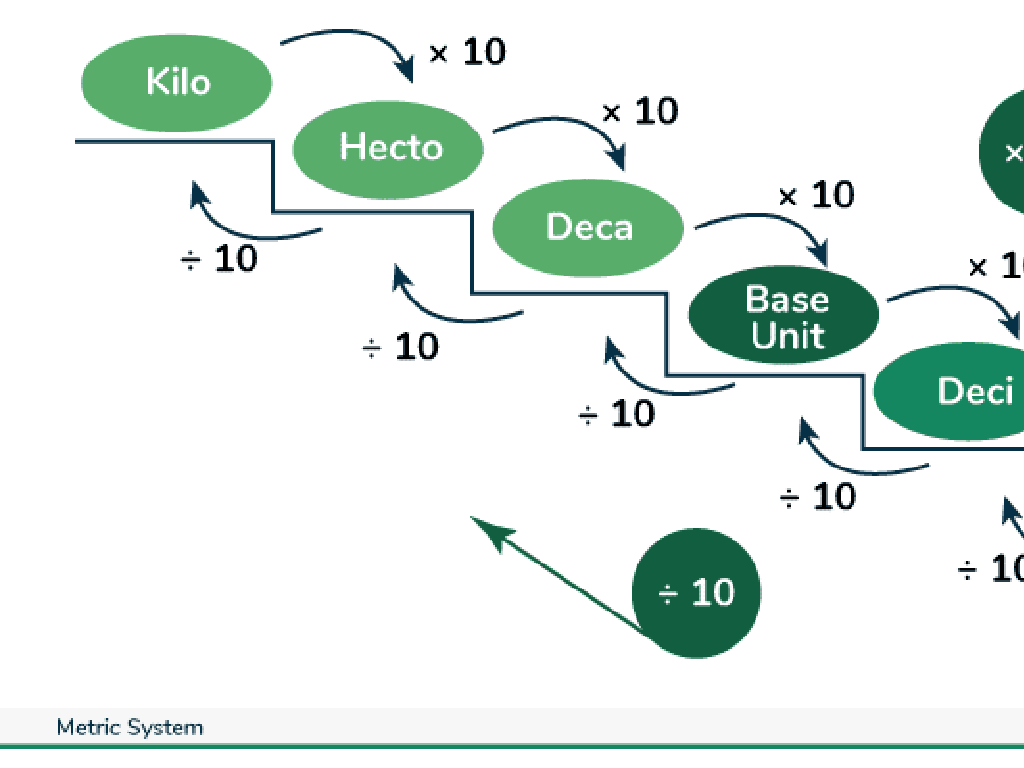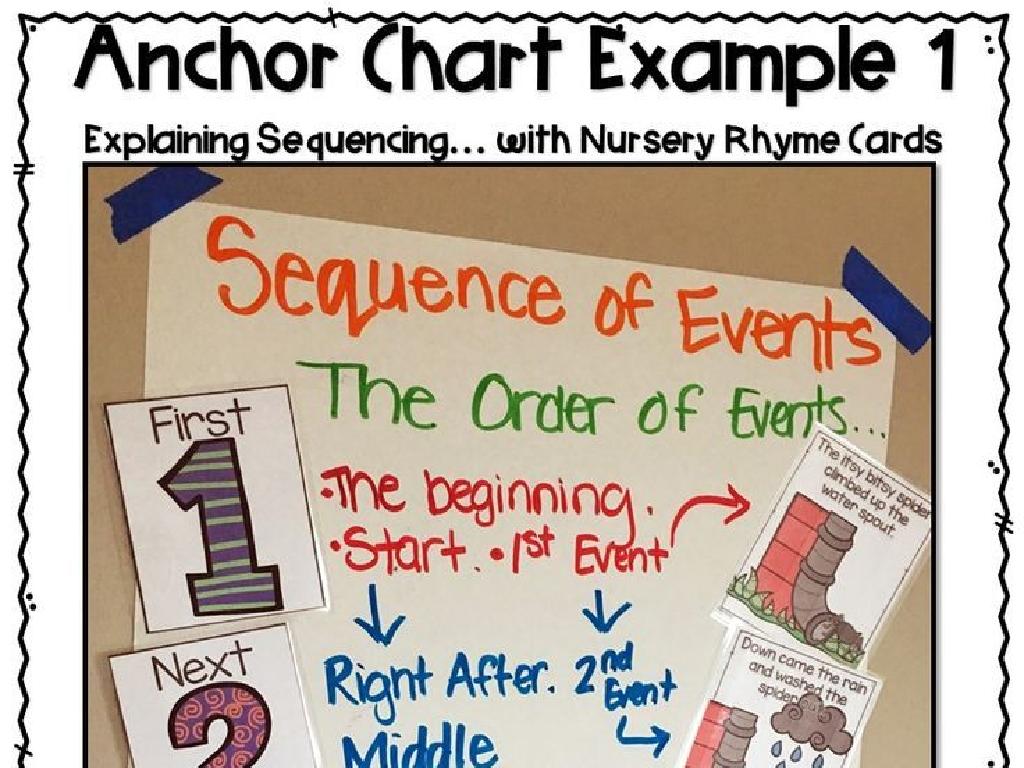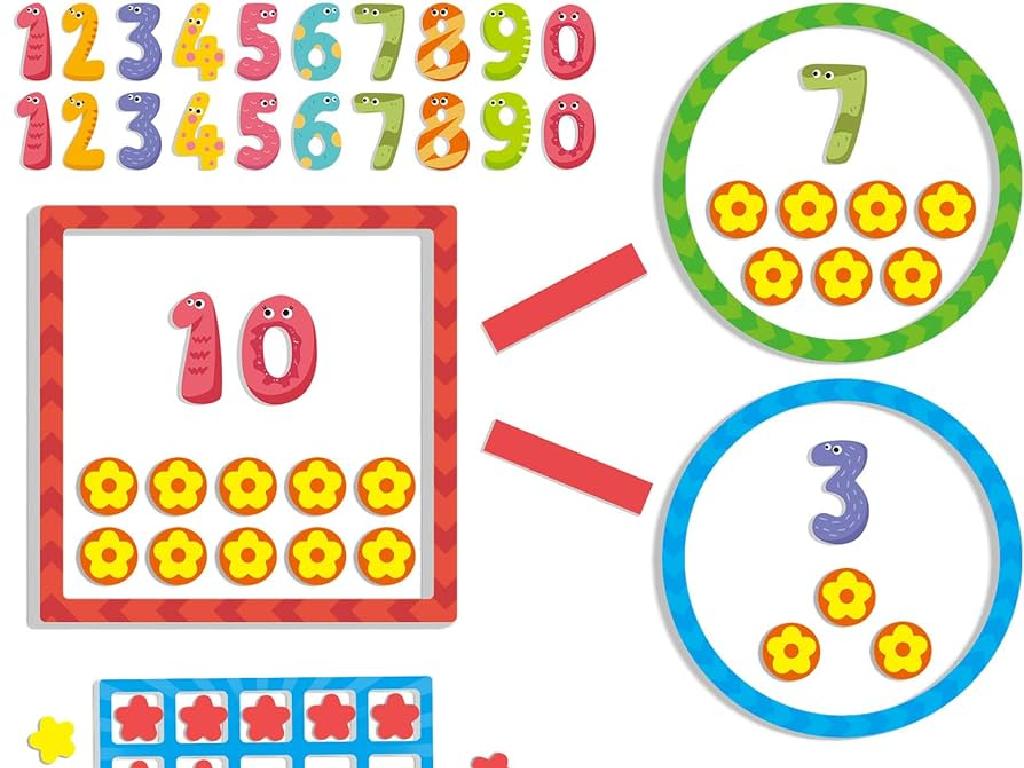Count Atoms And Molecules In Chemical Reactions
Subject: Science
Grade: Sixth grade
Topic: Chemical Reactions
Please LOG IN to download the presentation. Access is available to registered users only.
View More Content
Introduction to Chemical Reactions
– Basics of chemical reactions
– A process where substances change to create new ones
– Substances reacting together
– Atoms rearrange, forming new molecules
– Everyday life chemical reactions
– Baking a cake, rusting iron, vinegar and baking soda
– Observing reaction changes
– Color change, temperature change, gas production
|
This slide introduces students to the concept of chemical reactions, which are fundamental processes in chemistry where substances transform into different substances. Emphasize that during a reaction, atoms are not lost or gained but rearranged to form new molecules. Provide relatable examples such as baking a cake, where ingredients react to become a new product, or rust forming on iron. Highlight observable signs of a reaction, such as color changes, temperature shifts, or the production of gas, to help students identify reactions in real-world scenarios. Encourage students to think of other examples they’ve encountered in their daily lives.
Atoms and Molecules in Chemical Reactions
– Atoms: Matter’s building blocks
– Smallest units of elements, e.g., Hydrogen atom
– Molecules: Joined atoms
– Two or more atoms bonded, e.g., H2O (water)
– Types of molecules in reactions
– Reactants & products vary, e.g., H2 + O2 -> H2O
– Counting atoms and molecules
– Use coefficients & subscripts to tally in equations
|
This slide introduces the fundamental concepts of atoms and molecules within the context of chemical reactions. Atoms are the smallest units of matter that retain the properties of an element, such as a hydrogen atom. Molecules are groups of atoms that are bonded together, like water (H2O), which is made up of two hydrogen atoms and one oxygen atom. In chemical reactions, different types of molecules interact as reactants and transform into products. It’s crucial for students to learn how to count atoms and molecules to understand the conservation of mass in reactions. They should practice using coefficients and subscripts in chemical equations to account for all atoms involved. This will form the basis for balancing chemical equations in future lessons.
Balancing Chemical Equations
– Purpose of balancing equations
– Ensures atoms are conserved in reactions
– Law of Conservation of Mass
– Matter is neither created nor destroyed
– Steps to balance equations
– Identify elements, count atoms, add coefficients
– Practice with simple reactions
– Try balancing H2 + O2 -> H2O
|
Balancing chemical equations is crucial because it reflects the Law of Conservation of Mass, which states that matter cannot be created or destroyed in a chemical reaction. To balance an equation, students should first list all the elements involved in the reaction. Then, they count the number of atoms for each element in both the reactants and products. The next step is to add coefficients to the reactants or products to balance the atoms on both sides. It’s important to start with simple equations and gradually move to more complex ones. For example, balancing the reaction of hydrogen and oxygen to form water (H2 + O2 -> H2O) is a good starting point. This exercise helps students understand the proportional relationships in chemical reactions and the importance of balancing to adhere to the fundamental laws of chemistry.
Counting Atoms in Chemical Formulas
– Identify atoms in formulas
– H2O has 2 hydrogen (H) atoms and 1 oxygen (O) atom
– Practice with common compounds
– Practice with H2O, CO2, NaCl, etc.
– Learn subscripts in formulas
– Subscripts tell how many atoms of each element are present
– Understand coefficients
– Coefficients show the number of molecules
|
This slide introduces the concept of counting atoms within chemical formulas, a fundamental skill in understanding chemical reactions. Students will learn to identify different elements in a compound and count the number of atoms using subscripts. For example, in water (H2O), the subscript ‘2’ indicates there are two hydrogen atoms. Practice with familiar compounds like water (H2O), carbon dioxide (CO2), and table salt (NaCl) will help solidify this concept. Additionally, understanding the difference between subscripts and coefficients is crucial; subscripts refer to the number of atoms in a single molecule, while coefficients indicate the number of molecules. Encourage students to practice by writing out formulas and counting the atoms represented. This foundational knowledge will be applied in future lessons on balancing chemical equations and understanding chemical reactions.
Counting Molecules in Chemical Reactions
– Understanding coefficients
– Coefficients tell us the number of molecules involved in a reaction.
– Avogadro’s number and molecules
– Avogadro’s number, 6.022 x 10^23, represents a mole, a standard quantity in chemistry.
– Counting molecules in reactions
– Use coefficients to count the total molecules in a balanced equation.
– Practice with real reactions
– We’ll practice by counting molecules in sample reactions.
|
This slide introduces the concept of counting molecules in chemical reactions, which is fundamental in understanding chemical quantities. Coefficients in chemical equations represent the number of molecules or moles of a substance. Avogadro’s number is a key concept that allows us to grasp the vast number of particles involved in chemical samples. Students will apply these concepts by practicing counting molecules in various chemical reactions, reinforcing their understanding of the relationship between coefficients and the quantity of substances in a reaction. Encourage students to work through examples and to ask questions if they’re unsure about how to count molecules in a reaction.
Class Activity: Let’s Count Together!
– Group work: Balance chemical equations
– Count atoms and molecules in reactions
– Discuss the role of each atom in the reaction
– Understand how atoms rearrange in reactions
– Present findings to the class
|
This class activity is designed to engage students in a hands-on learning experience with balancing chemical equations. Divide the class into small groups and assign each group a different chemical equation to balance. Provide guidance on how to count atoms and molecules, emphasizing the conservation of mass in chemical reactions. Encourage students to discuss the role of each atom and how they rearrange during the reaction. After the activity, each group will present their balanced equation and explain the process they used to the rest of the class. This will reinforce their understanding and allow for peer learning. Possible activities for different groups could include balancing equations with varying levels of complexity, identifying types of reactions, or creating visual models of the reactions.
Conclusion: The Role of Atoms and Molecules
– Recap: Counting atoms in reactions
– Understanding the balance in chemical equations is crucial.
– Key points of today’s lesson
– We learned about the Law of Conservation of Mass, how to balance equations, and the role of coefficients.
– Q&A session for doubts
– Now’s the time to ask questions and get clarifications on the lesson.
|
As we wrap up today’s lesson, it’s important to revisit the concept of counting atoms and molecules in chemical reactions. This understanding is fundamental to grasping the Law of Conservation of Mass and balancing chemical equations. Highlight the key points discussed, such as identifying reactants and products, using coefficients to balance equations, and the significance of subscripts in chemical formulas. The Q&A session will provide an opportunity for students to clear up any confusion and solidify their understanding. Encourage students to participate actively and ask questions about any part of the lesson they found challenging.
Homework: Balancing Chemical Equations
– Practice balancing equations
– Count atoms in 5 reactions
– Tally each atom type in reactions
– Note molecules involved
– Identify all molecules formed
– Discuss solutions in class
|
This homework assignment is designed to reinforce the lesson on counting atoms and molecules in chemical reactions. Students are expected to practice balancing chemical equations, which is a fundamental skill in understanding chemical reactions. They should identify and count the number of atoms for each element involved in at least five different chemical reactions, ensuring that the number of atoms for each element is the same on both sides of the equation. Additionally, students should note the molecules involved in these reactions. In the next class, students will have the opportunity to discuss their solutions, which will help them clarify any doubts and solidify their understanding of the topic. Encourage students to use the conservation of mass principle to guide them in balancing equations and to seek patterns that may help them in this task.





